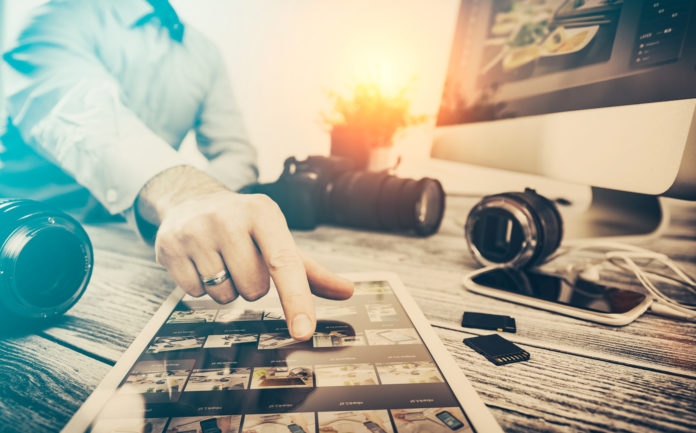Product photos are an engine that drives your sales and revenues, but the product itself is only a part of a bigger photography formula that makes an image pop and lures viewers into buying. What we mean is that a really impressive product photo blends the right amounts of a product, a background, some props, some free space, and colors into a compelling story. Take away one component – and the elegant composition falls apart helplessly.
We believe you’ve been in the business of online sales long enough to remember a maxim that the best background for product photos is white. That’s mostly true, but not always. If you shoot not for Amazon but for your own standalone eComm, you can afford a bit of creative freedom and experiment with background colors and textures palette.
In this article, we are going to briefly discuss the colors of the background and how they can make or break a product shot. And if you need professional advice or services of a professional who knows everything about backgrounds – and can actually apply them in product shots – Heroshot.io is your go-to talent hub.
Don’ts of Choosing Photo Background
– Don’t’ pick (or create) a background that is too busy.
Your product should be easily identified in the picture, especially if you consider that users today tend to shop on mobile, scrolling on the go. A background should support the product, not obscure it. So, avoid the clutter, the heavily patterned background, or intense background storytelling if your product is small and can easily get lost. If you want to imitate the shop assortment or a crowd, blur it. Skip the rich ornaments and choose something muted and unobtrusive.
– Don’t pick a background that contradicts the purpose or message of your product.
You sell the product, not the background. So make the backdrop complement and enhance the product. Sandy shores, sea waves, and palm leaves are OK for UV protection cosmetics, dark glasses beachwear, or refreshing drinks. Laptops, smart shoes, sleek tees, or headphones will require a more polished environment, like wood, concrete, steel, or neutral tones that bring forward the craftsmanship put into the product. The list is endless, but we hope you get it. The background should sell the product, not make a viewer wonder what it is all about.
Dos of Choosing Photo Background
When you’ve decided on the overall impression, it’s time to pick the background color and texture. As said, plain white background or ‘no background’ is a safe bet. But sometimes, alternatives are a viable choice.
Beige, light gray, ivory, off-white, – they all can make the white product pop. White on white photography requires plenty of editing, while a pure white shirt or sneakers can look awesome on the palest shade of gray or blue. White can be boring or impersonal, especially when every eComm uses it. Subtle pale shades of background can make a difference, making your product picture stand out among an array of similar images.
Color Wheel
Cultural symbolism of colors is a rich topic, but it’s impossible to choose colors that will have the same ‘meaning’ in every culture (and you definitely want to reach a diverse audience of customers). Rather, remember the basic principles of the color wheel – cool/warm colors, complementary colors, etc. These rules are few, but they will serve you well.
For example, a product with a cool color palette will look good on warm-colored background, and vice versa. A dark product will look impressively on a light background, while a light product can benefit from a bit of rich color as a backdrop.
A separate point to consider is color matching when a product color (packaging or material color) closely matches that of the background. It’s an interesting effect, clean and expensive, so to say, but its realization should be carried out by professionals.
Textures
Sometimes a bit of texture can create the right mood and make the product look completely different, more lifelike, and real. However, the product purpose and/or message and the background should align, as we said.
Wood and wooden objects are often associated with leisure, nature, country style, travel, etc. Wood is warm and cozy (although in some cases it can evoke the roughness of nature). Food, travel and leisure clothes, accessories, relaxed footwear, and strong liquors pair well with it.
Steel, as well as concrete, marble, or other stone textures are associated with power, strength, and urban lifestyle, and so they go well for formal accessories, jewelry, upscale devices, and expensive stationery, you get it.
If you choose to shoot outdoors, using buildings as a backdrop, also be careful. The selection of wall texture depends on the product you need to capture. More folksy and irregular textures match the casual and travel-related products, while elaborate masonry or blurred cityscapes work with more ‘professional’ and urban-style items.
Definitely, this classification is very relative and open to exceptions, but the main point is obvious. Make the texture in the background work conceptually for the product, not against it.
Some types of background are better added during the post-production process, and some are blended into the picture immediately during the photo shoot, but one thing remains true. Your creativity paired with the professionalism of a really experienced photo artist can work wonders for your products and your sales. So, launch your campaign right now!










